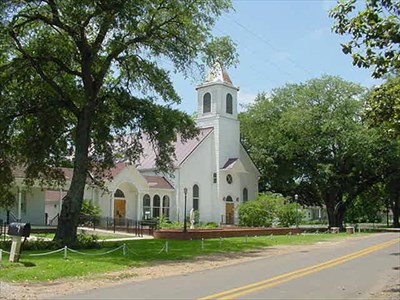
Good Morning POU!
We take a look this week at the lives of the placee, women of color who became the lifetime mistresses of wealthy slave owners in the antebellum south.
When you hear today’s racists yelling that the Civil War was not about slavery but states rights, and the rationale is
“because black people owned slaves!!”. They don’t mean some enterprising field negro the complexion of a blackberry rose up through the ranks and became a wealthy plantation owner. Nope. “Black” Slaveowners were undoubtedly Light, Bright, Damn Near White, You can’t tell if the hair laid right.
Perhaps the most well known placee in history is Marie-Thérèse Coincoin, who lived for eight decades in Natchitoches Parish, La. She would help to found a family dynasty of free, colored planters, the Metoyers, who by 1830 owned over 200 slaves—8 percent of all enslaved people in the parish.
Marie Thérèse Metoyer dite Coincoin became an icon of black female entrepreneurship in colonial Louisiana. She was born at the frontier outpost of Natchitoches on Caned River in August 1742 as a slave of the post founder, the controversial explorer Louis Juchereau de St. Denis. She would be, for twenty years, the placée of a French colonial merchant-turned-planter, Claude Thomas Pierre Métoyer two years her junior.
At the onset of their plaçage, she was already the mother of five children (born of a union with an American Indian slave); she would bear ten more to Métoyer. In 1778, he freed her after the parish priest filed charges against Coincoin as a “public concubine” and threatened to have her sold at New Orleans if they did not end their relationship.
Together they moved from the post, to outlying lands, where their liaison continued until 1788. That year, under pressure from the white community, he married another Marie Thérèse, a white Creole widow of German and French extraction, in order to have legal heirs; Eventually, as they matured and married, he would manumit (free) the eldest five of his ten children whom he held in slavery after he purchased Coincoin and their offspring.
In setting Coincoin aside, Métoyer donated to her his interest in 80 arpents, about 68 acres (280,000 m2) of unpatented land, adjacent to his plantation, to help support their free-born offspring. On that modest tract, Coincoin planted tobacco, a valuable commodity in the struggling colony.
The Yucca House, CoinCoin property

She and her children trapped bears and wild turkeys for sales of meat, hide, and oil locally and at the New Orleans market. She also manufactured medicine, a skill shared by her freed-slave sister Marie Louise dite Mariotte and likely one acquired from their African-born parents. With this money, she progressively bought the freedom of four of her first five children and several grandchildren, before investing in three African-born slaves to provide the physical labor that became more difficult as she aged.
After securing a colonial patent on her homestead in 1794, she petitioned for and was given a land concession from the Spanish crown. On that piney-woods tract of 800 arpents (667 ac) on Old Red River, about 5 mi from her farmstead, she set up a vacherie (a ranch) and engaged a Spaniard to tend her cattle. Shortly before her death in 1816, Coincoin sold her homestead and divided her remaining property (her piney-woods land, the three African slaves, and their offspring) among her own progeny.
As often happened among the children of plaçages, Coincoin’s one surviving daughter by Métoyer, Marie Susanne, became a placée also. As a young woman, apparently with the blessing of both parents, she entered into a relationship with a newly arrived physician, Joseph Conant from New Orleans. When he left Cane River, soon after the birth of their son, she formed a second and lifelong plaçage with a Cane River planter, Jean Baptiste Anty. As a second-generation entrepreneur, Susanne became far more successful than her mother and died in 1838 leaving an estate of $61,600 (equivalent to $1,500,000 in 2009 currency). (Susanne must have been the Kim Kardashian)
Auguste Metoyer, son of Nicolas Augustin Metoyer, with his wife and first cousin Marie Agnes Poissot. They are the grandchildren of Claude Thomas Pierre Metoyer and Marie Thérèze CoinCoin.

Modern archaeological work at the site of Coincoin’s farmstead is documenting some of the aspects of her domestic life. A mid-nineteenth century dwelling, now dubbed the Coincoin-Prudhomme House although it was not the actual site of her residence, commemorates her within the Cane River National Heritage Area.
A Cane River plantation founded by her son Louis Metoyer, known today as Melrose Plantation, and its historic buildings Yucca House and African House still stand. Her eldest half-French son, Nicolas Augustin Métoyer, founded St. Augustine Parish (Isle Brevelle) Church, the spiritual center of Cane River’s large community of Creoles of color who trace their heritage to Coincoin.
St. Augustine Parish Church

The Church of St. Augustine is distinctive among Southern churches of all denominations for its racial role reversals. Surviving pew records show that the front seats were occupied by the Créole de couleur Metoyer family who built the chapel. Seated behind them were the families of prominent white planters within the community. Post-Civil War, St. Augustine chalked up another apparent first in U.S. racial history. Its own congregation by this time was almost exclusively non-white; however, it was the mother church for the predominantly white congregation of Mission Ste. Anne on Old River.


